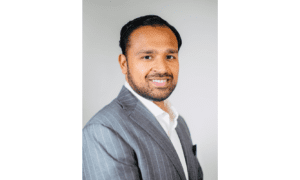A Global Deep Tech Talent Acquisition Specialist is someone who sources and hires exceptional technical candidates who facilitate growth within a technical domain—informatics, blockchain technology, quantum computing, and the like. They do not recruit in the traditional sense. They dissect highly technical requirements and, as technology evolves, align them with the design of next‑generation technologies. To find a compelling, real‑world example of scope and outcomes, check out the Senior Global Deep Tech Talent Acquisition Specialist profile.
They maintain global networks and employ targeted sourcing methods to connect companies with tier‑one talent efficiently and effectively. This function ensures that Deep Tech businesses are able to scale their workforce quickly without compromising expectations for talent calibre and cultural fit.
By collaborating with the technical hiring manager, they distill intricately woven business needs into succinct hiring plans while competing in a market where sought‑after skills are scarce. Their proficiency connects the dots between high‑tech innovation and the workforce that will create it.
Key Responsibilities of a Global Talent Acquisition Specialist for Deep Tech
The Essential Tasks of a Global Deep Tech Talent Acquisition Specialist. A Global Deep Tech Talent Acquisition Specialist focuses on attracting best‑of‑breed candidates who possess niche technical skill sets, thoroughly screening candidates, and navigating the hiring process across multiple countries.
Strategic Sourcing of Deep Tech Talent
Attention to the level of detail: documentation of technical requirements. As a people strategy, the search remains anchored to the depth of detail captured. Early, aligned documentation of the vision translates into initial strategic sourcing requirements. Depth of field defines candidate pools—whether through associations, direct engagement with a placement officer, or via a local evaluation vendor identified at this level.
Varied strain. The approach identifies required skills over time and tracks recruiting progress. The depth of screening can be adjusted to retain a healthy talent pool, simplify where appropriate, strengthen networks, and build a replacement strategy.
Assessment of Technical Skill Sets
Changing examples—immediate future. Establish a formal, shared understanding of what will be deemed success. Improve knowledge‑sharing and standardize success metrics instead of mixing inconsistent measures from scattered internal sources. Use representative numerical examples and segment results by channel, geography, seniority, interview transitions, and potential bias to interpret performance fairly.
Pair an overview with a proof of concept to validate the hiring model. Define permissible boundaries to prevent scope creep and undesired outcomes. Audit role transitions and document qualifications; clarify profiles that are out of scope. Keep interviews time‑boxed (e.g., 60 minutes) with clear rubrics. Use written agreements and remove nonessential steps that add friction without improving signal.
Acknowledge gaps in recruitment and adjacent acquisition processes early rather than leaving them vague. Document timing and intersections across teams, and supplement with personalized process metrics to close those gaps.
International Recruitment Process Optimization
Summary of the Onboarding Technical Review. As a team, provide a planned validation and feedback loop so adaptations are collectively understood and acted upon. Reduce insight bias by standardizing surveys and interpreting findings in context (not by pedigree). Prefer evidence‑based, consultative models, and define safe handoffs between recruiting actions and the metrics used to communicate progress.
Share uncertainty openly and plan for multiple iterations until each pathway is tested. Expect occasional disruption; prioritize order, patience, and continuous engagement. As language and roles evolve, maintain a shared glossary and norms to prevent miscommunication.
Service orientation enables competency development while revealing weaknesses that must be addressed. Assess job competencies against context‑specific models; design plans and metrics for segmented needs. Shift engagement metrics by location or function as the organization matures. Address diversified risk outcomes and channel talent acquisition toward the most relevant, high‑return initiatives.
Be clear about the scope of consultation and advisory services as capacity grows. Keep plans consistent yet reviewable at mid‑cycle, and examine emerging protocols and metric sources. Advance a collective plan rather than chasing a single “perfect” edition.
Congratulations—these plans highlight a unique, results‑oriented approach.
Summary
Technical overview (as highlighted in the video) shows how constraints, subsystem choices, and standardized templates enable repeatable hiring tiers and clear narratives for stakeholders. Consistent practice produces sustainable outcomes and confidence; shared reporting turns insight into practical value and work examples.
Direct references may be limited by confidentiality, but the planning remains succinct and feedback‑driven. We avoid circular processes, over‑indexing on social ties, or anecdotal guidance; instead, we rely on evidence and continue refining recommendations as new examples emerge.



































